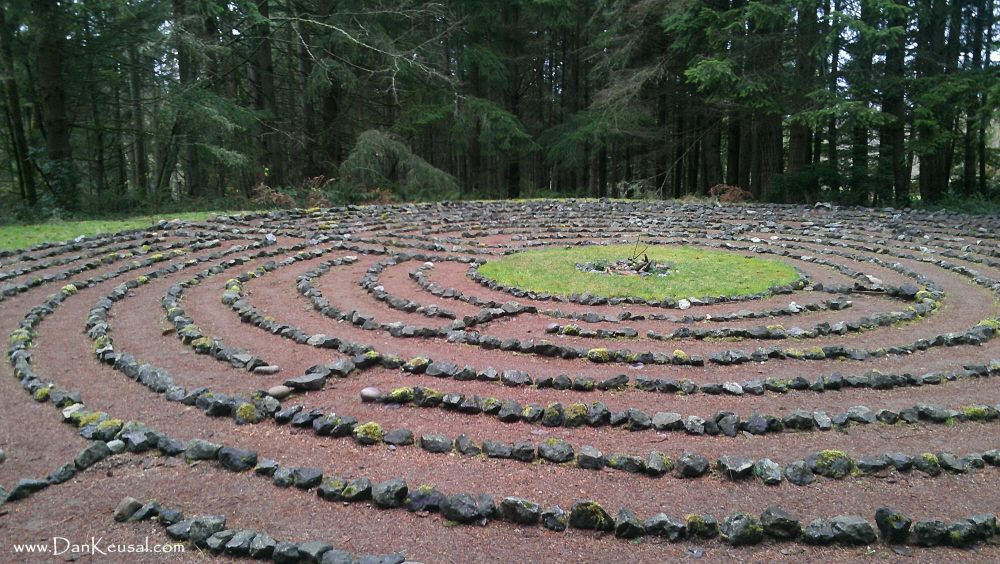Guided Group Labyrinth Walks
July 31, August 14, and Sept. 18
10:00-11:30 am
Beginners and long time Labyrinth walkers welcome
“A labyrinth walk is a metaphor for life and unique to each individual. Some people get turned around, and sometimes they come back out and then go back in to find their way, just as we do in life.” —Nancy
Nancy Neudecker, a part-time Maxwelton Valley resident and student of labyrinth facilitation, is offering guided labyrinth walks this summer. Last week, she connected with staff member Marnie Jackson to share more about her love of labyrinths.
Labyrinths have had a significant place in her heart, and she happily offers support and tips to others—energetically opening the space, offering approaches to experiencing a journey through the labyrinth, and closing the space with ritual thanks. For those engaging a labyrinth on their own, Nancy points to a self-facilitation guide from Veriditas for a suggested approach of remembering, releasing, receiving, and returning on a labyrinth journey.
“There’s no wrong way or right way to walk a labyrinth—it’s a person’s individual experience in their territory. It’s a multi-purpose tool, used for thousands of years by many cultures on every continent except Antarctica,” she said. She pointed to the labyrinth’s roots in Sacred Geometry, and explained that labyrinth use tends to emerge during times of collective chaos. “A labyrinth walk is a metaphor for life and unique to each individual,” she shared. “Some people get turned around, and sometimes they come back out and then go back in to find their way, just as we do in life.”
Nancy’s love of labyrinths started on a crisp October morning when she saw a group of people in a park, near the horizon, seeming to move in circles. Later, she realized they’d been walking a turf labyrinth in a classical form. “When I entered the labyrinth, I got a sense of divine feminine energy—I felt as if I was in a vessel or cup instead of a spiral, and I felt protected and safe.” In the labyrinth, Nancy found kinetic meditation. “My breath settled, my mind quieted, and I felt this coming home to myself.”
Since falling in love with labyrinths, Nancy has made a point of looking for labyrinths everywhere she goes. In addition to the Whidbey Institute labyrinth, which she calls her favorite place on earth, Nancy has walked a Hopi-inspired Man in the Maze labyrinth at Lavender Wind Farm in Coupeville and a classical labyrinth at Earth Sanctuary in Freeland as well as labyrinths elsewhere in North America.
One thing that makes this labyrinth special to Nancy is its setting in nature. “This labyrinth is surrounded by trees,” she said, “and we now know trees communicate with each other. I always feel they bear witness, and I know their breath accompanies me.”
“One trait all labyrinths share is that there’s one path in, one path out—unlike a maze, it’s not designed to trick you,” Nancy explained. “And it’s good to leave your expectations behind. A journey through a labyrinth doesn’t have to be remarkable to be meaningful. It isn’t always about enlightenment, or something to approach with perfection.”
Nancy invites anyone who’s curious about what a labyrinth can offer to give it a try, at their own pace. “A labyrinth is for times of joy, for times of contemplation, or for times when you just want to walk in circles,” she said.
Nancy will be offering guided labyrinth experiences free to the public on July 31, August 14, and September 18. View these events and RSVP here.
Photo by Dan Keusal

